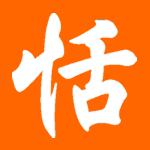to: tiangotlost@gmail.com
date: Tue, Jul 7, 2009 at 9:41 PM
subject: Look at this Arrivals sign from Sweden
This is from Arlanda, Stockholm's international airport. They have a lot of these signs.
In Sweden, we pride ourselves on being way better than everybody else, by the way.
Johan, Sweden
It appears manufacturer of the sign did not have correct language and fonts pack installed. Instead of displaying 到達 (arrivals), the second character showed up as a rectangular box.


At first I thought they had "到口," which, while strangely phrased and generally unheard of, might still be passable as a misuse of "入口" or "出口," but you're right. The font in "口" is too incongruous with the font of "到," and makes it more likely that they simply lacked the proper font.
ReplyDeleteI think that the Swedish staff making the checkings might have a limited knowledge of Chinese and/or Japanese and mistook the empty square for 口
ReplyDeleteAnyone who has worked with modern computer fonts will immediately recognise that this square is the standard empty square and not a ”口”.
ReplyDeleteIn airports where the native language is Chinese, "arrivals" is actually indicated as "入境."
ReplyDelete“到达” might be more proper for "arrivals". “入境” means entering the territories of another country (i.e. customs).
ReplyDeleteThat □ surely isn't “口” but isn't a perfect square either, there are some variations in stroke width. In fact I would say it looks likes the whole “到□" shapes have been sent through a vector graphic simplifier.
That is most likely what happened. When designing for print, the graphics designer is often not the one who will actually print the finished letter but send it to another company who has the appropriate equipment. Since fonts can be very expensive (up to several thousand $, depending on the license), files meant for print are usually vectorised, so one printing it does not need to install the right font for it to be displayed (and therefore printed) properly.
DeleteEspecially in big places like airports, the whole "design" of the place was most likely done by a big design agency which may or may not have asked professional translators to do the signage. Usually, such translations are done in word or similar programs and then just copy pasted into Photoshop or Illustrator.
While the actual translator will most likely have used a font, that did contain the correct hanzi, the one that the company used did not and therefore left the □.
Being a Swedish company they might not have had a Chinese speakers to notice and just mistook the square for a hanzi.
I disagree with Kakur.
ReplyDeleteEach language, spoken within a definable region, contains idioms/vernaculars that "lock" the usage of certain words/phrases in specific situations; even though other words/phrases carry the same meaning.
"Arrival" is a perfect example. Any native American-English-speaking adult will immediately tell you that the word "arrival" when seen in an airport means a certain thing.
"Dao Da" means "to arrive" in Mandarin Chinese. However, to any native Mandarin-speaking adult, "Roo Jin" means the arrival terminal at an airport; no mistake about it!
Here you can see an Arrivals sign in a Beijing airport:
ReplyDeletehttp://www.istockphoto.com/stock-photo-10986434-directional-sign.php
It does say “到达”.